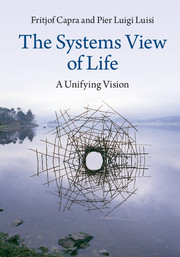Book contents
- Frontmatter
- Dedication
- Contents
- Preface
- Acknowledgments
- Introduction Paradigms in science and society
- I The mechanistic worldview
- II The rise of systems thinking
- 4 From the parts to the whole
- 5 Classical systems theories
- 6 Complexity theory
- III A new conception of life
- IV Sustaining the web of life
- Bibliography
- Index
4 - From the parts to the whole
from II - The rise of systems thinking
Published online by Cambridge University Press: 05 April 2014
- Frontmatter
- Dedication
- Contents
- Preface
- Acknowledgments
- Introduction Paradigms in science and society
- I The mechanistic worldview
- II The rise of systems thinking
- 4 From the parts to the whole
- 5 Classical systems theories
- 6 Complexity theory
- III A new conception of life
- IV Sustaining the web of life
- Bibliography
- Index
Summary
As we mentioned in the Introduction, the tension between mechanism and holism has been a recurring theme throughout the history of Western science. In twentieth-century science, the holistic perspective became known as “systemic” and the way of thinking it implies as “systems thinking.” In this chapter we shall review the origin and early development of systems thinking during the first three decades of the twentieth century.
The main characteristics of systemic thinking emerged in Europe during the 1920s in several disciplines. Systems thinking was pioneered by biologists, who emphasized the view of living organisms as integrated wholes. It was further enriched by Gestalt psychology and the new science of ecology, and it had perhaps the most dramatic effects in quantum physics.
The emergence of systems thinking
At the turn of the century, the triumphs of nineteenth-century biology – cell theory, embryology, and microbiology – had established the mechanistic conception of life as a firm dogma among biologists. And yet they carried within themselves the seeds of the next wave of opposition, the school known as organismic biology, or “organicism.” While cell biology made enormous progress in understanding the structures and functions of many of the cell’s subunits, it remained largely ignorant of the coordinating activities that integrate those operations into the functioning of the cell as a whole.
- Type
- Chapter
- Information
- The Systems View of LifeA Unifying Vision, pp. 63 - 83Publisher: Cambridge University PressPrint publication year: 2014
- 1
- Cited by



